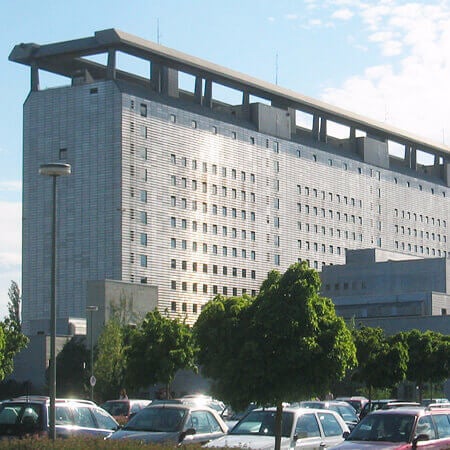About the disease
Acromegaly is a condition that causes bones and organs start to grow abnormally and exceed their normal size. Acromegaly develops when there is excessive production of the growth regulatory hormone. As a result, teenagers can grow to abnormal heights. Most commonly, acromegaly affects the face, legs and arms.
The growth hormone is produced in the pituitary gland. According to the National Institute of Health, over 95% of adults and teenagers with acromegaly have a benign tumor of the brain, which has affected and damaged the pituitary gland. This kind of tumor is also known as an adenoma. It is a very common type of tumor, affecting approximately 17% of the world’s population. Adenomas are not usually dangerous and do not cause acromegaly. Acromegaly is most common in people who have already reached puberty. It develops gradually and some months may pass before a sufferer notices changes in their height. Middle-aged people are most at risk of developing this condition if they have adenoma in the brain, which is why they should be observed by the doctor regularly.
Symptoms
- Joints become enlarged and look abnormal for the age of a teenager
- Shoe size changes too rapidly
- Excessive hair growth
- Unexpected growth spurs
- Weight gain
- Uncommon hormonal changes
- Abnormal sweating
- Swollen joints
Diagnosis
- A blood test can determine the amount of growth hormone is present in the patient’s bloodstream. They may also be asked to drink a small amount of glucose, which normally suppresses the amount of growth hormone in the blood. In people with acromegaly, however, the glucose intake has no effect and the amount of growth hormone in the blood stays high.
- An X-ray of various joints can establish whether the patient’s bones have become abnormal in size. The X-ray needs to be done repeatedly over a period of time in order to see continuous changes in bone size.
- MRI and CT scans can be used to examine the patient’s soft tissue and inner organs to see if they have also grown abnormally. It is important to determine this, because an enlarged heart, liver or kidneys can be a dangerous condition in itself and would need to be treated immediately. Scans are also used for the diagnosis of adenomas in the brain.
Treatment
- Surgical treatment includes the resection of pituitary adenomas, which put pressure on the pituitary gland and cause it to produce too much growth hormone. In most cases, surgery is successful.
- Radiation therapy is required if sections of the tumor remain after surgical resection.
- Medication to shrink the tumor is prescribed if surgery was unsuccessful. Special drugs are used that avoid affecting the pituitary gland.
Authors: Dr. Nadezhda Ivanisova, Dr. Sergey Pashchenko
















